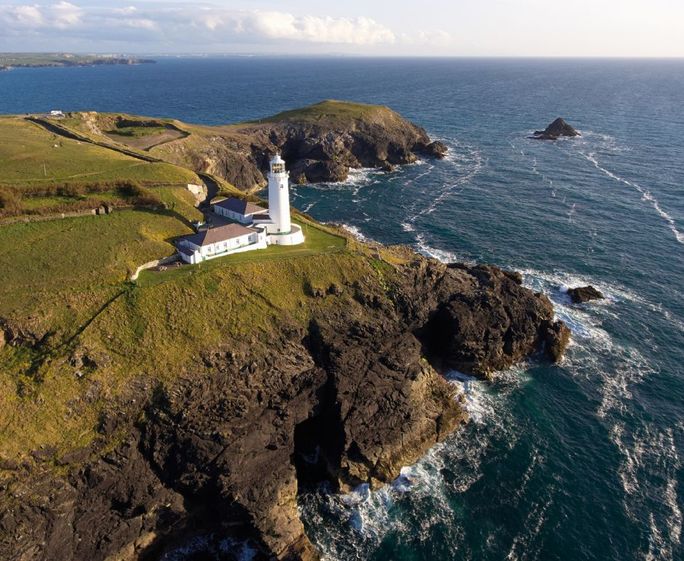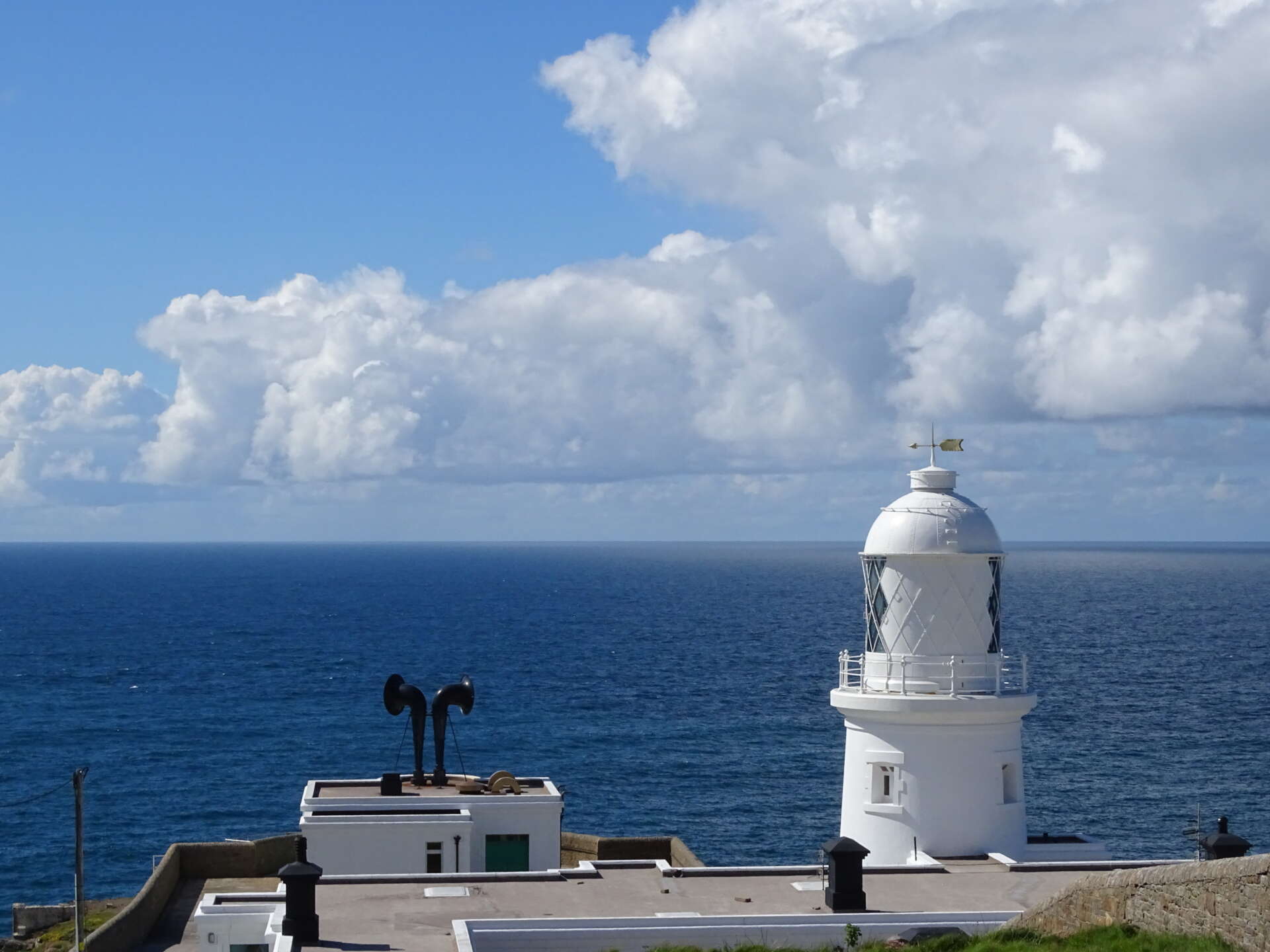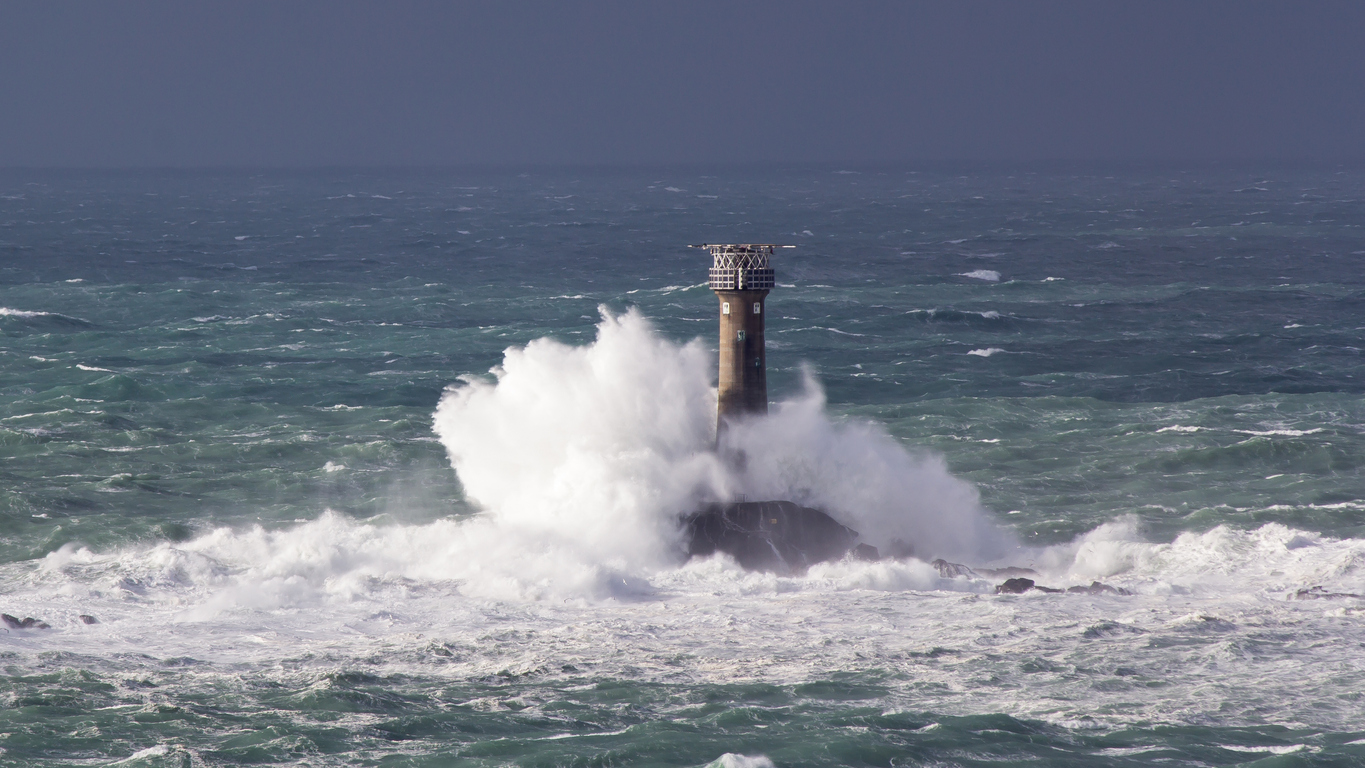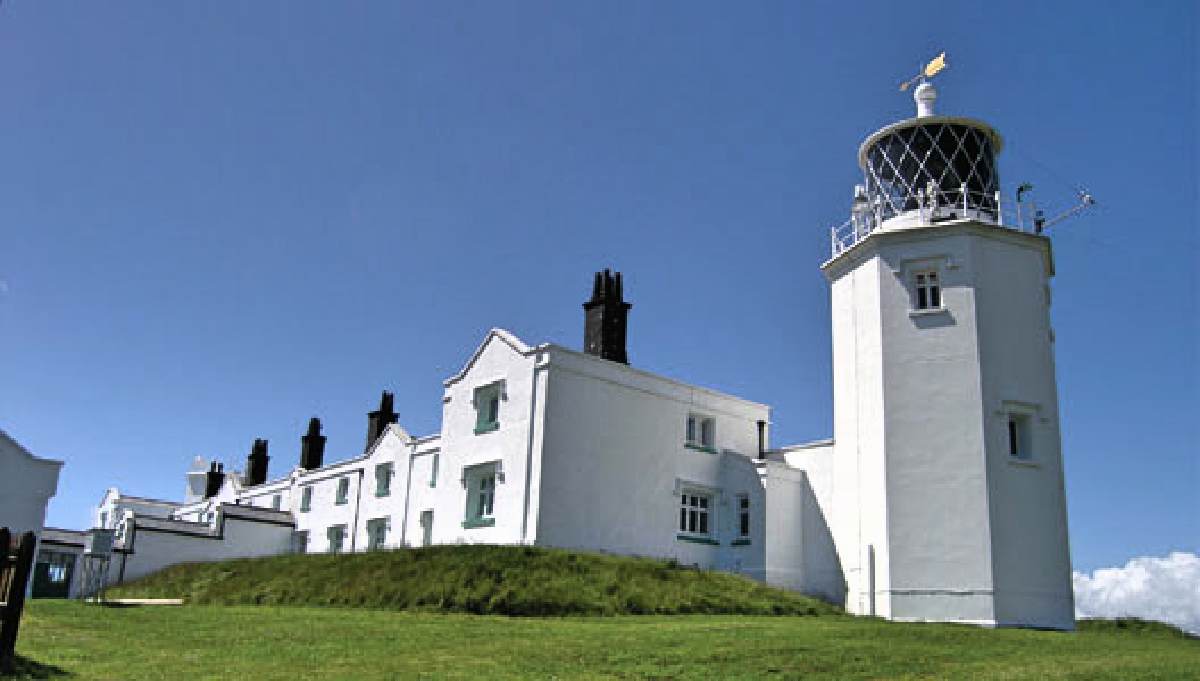The history of Cornwall’s nine lighthouses reflects the county’s enduring relationship with the sea and features a cast of men who have attempted to control it, make money from it or simply survive it.
Trevose Head
West of Padstow, perched on a dramatic headland, Trevose Lighthouse has been warning ships off the rocks since the mid-19th century in an area prone to heavy sea mists and fog. It’s closed to the public, but you can pass close by Trevose Head on the South West Coast Path, an area that comes under the National Trust banner.

Godrevy
The view of the striking white octagonal tower on its small rocky island on the eastern edge of St Ives Bay is one of the most beautiful and iconic in Cornwall. Below the waters though lurks notorious Stones reef, wrecker of countless ships.
The writer Virginia Woolf spent Victorian childhood summer holidays near here and wrote that this time in Cornwall was deeply embedded in her memory. It is widely agreed that her famous novel To the Lighthouse was inspired by Godrevy.
While you can’t actually go to the lighthouse, Godrevy beach on the mainland is owned by the National Trust and has a café where you can look out to sea and seek your own inspiration.

Pendeen Watch
Already a popular tourist spot, the construction of the lighthouse at Pendeen in 1900 attracted many more visitors, leading to the opening of a tea room and lodging house. Along with the main lighthouse building, four cottages were also built together with a separate engine room for the fog horn. The keepers’ cottages are now holiday lets, and the lighthouse is one of the few open to the public.

Longships
Longships stands on a rocky reef a mile out to sea, west of the cliffs at Land’s End. The artist, William Turner encapsulated the dangers of this spot in his watercolour ‘Longships Lighthouse, Land’s End’.
Before it was built this was a notorious spot for wreckers, who would lure ships to the rocks using beacons before scavenging the lost cargo. Longships isn’t accessible to the public but you can get a good view from various points at the Land’s End visitors centre.

Wolf Rock
Never was a lighthouse more aptly named than Wolf Rock – fissures in the rock in which it’s built are said to howl during the frequent gales that batter it from all angles. The structure we can (just about) see today, some 8 miles out at sea, is actually the fifth beacon to stand in these perilous waters. Because of its distance, Wolf Rock is only really visible as a small dash on the horizon.
Tater Du
The final lighthouse to have been built in Cornwall, Tater Du casts its bright white beacon off the dark granite cliffs to the south of Land’s End. Completed in 1965, the comparatively modern structure has never been manned. No expense was spared here, with 72 fog signal speakers built into the wall of the tower. Tater Du isn’t open to the public but you can see it along the south west path between Porthcurno and Lamorna.
Lizard Point
This lighthouse stands at mainland Britain’s most southerly point but it’s not the first. The original structure was built in 1619 by Sir John Killigrew who would attempt to collect fees from passing ships. His business failed after just four years and the lighthouse was demolished. The building which now stands here has an unusual twin tower construction, which you can visit along with the Engine Room.

St Anthony’s Head
Watching over Falmouth harbour, the third deepest natural harbour in the world, is this handsome 19th century lighthouse, St Anthony’s Head. The headland is now owned by the National Trust and houses one of the most popular holiday rentals in Cornwall – a keeper’s cottage that featured in the 1980s children’s TV series Fraggle Rock!
Eddystone
The current tower, built in the 1870s, was preceded by the first ever lighthouse to be built on small rocks in the open sea. Early wooden structures were destroyed in storms and fire but the fourth, known as Smeaton’s tower, was far more successful. This classic red and white striped lighthouse was secured to the rock by a structure that mimicked the base of an oak tree. The upper part of the tower can still be seen on Plymouth Hoe, after it was moved there, block by block, in the late 19th century.
